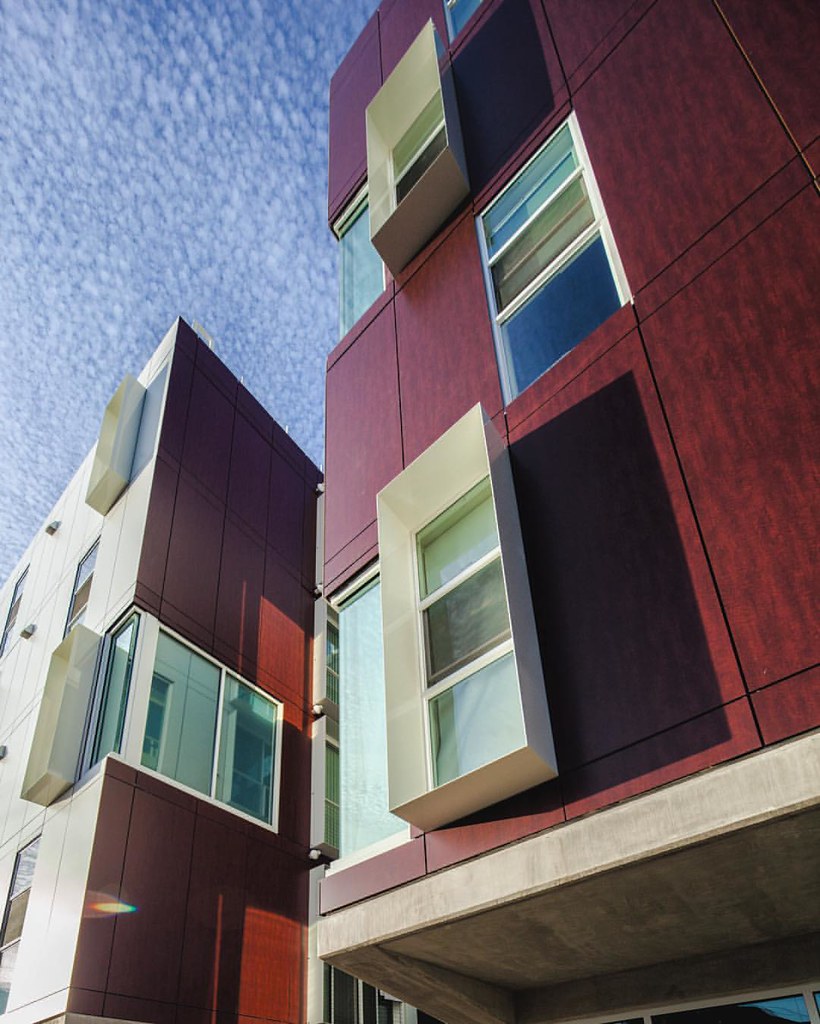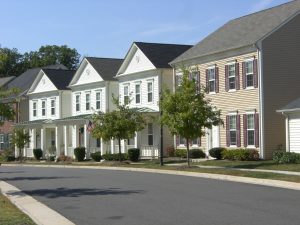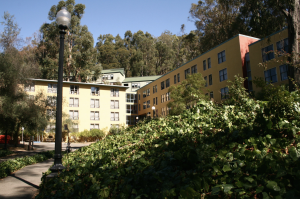By Angelina Zevallos
The gap between the richest and poorest in the United States is largely driven by wealth concentration at the top. According to Thomas Piketty, the U.S. pre-tax income share for the bottom 50 percent of income earners was 19 percent in 1962 and 13 percent in 2014. In contrast, the top 1 percent of income earners had an income share of 13 percent in 1962 and 20 percent in 2014.1 These opposing trends exemplify income inequality because of the unevenness of income distribution among a population. As a result, low-income families living in the San Francisco Bay Area are struggling to obtain affordable housing, especially in the city of Berkeley. Many people are moving into Berkeley with the intention of purchasing property and charging higher rent, leading to gentrification and the eviction of tenants. The housing affordability crisis is directly linked to income inequality because the real estate market tends to only cater to the top-end earners, which displaces a majority of Californians earning less than the state median income.
In order to understand the relationship between income inequality and the current housing crisis, it is important to analyze the 2007 – 2009 Great Recession and the housing market crash. Decreased construction spending led the way into the recession. A drop in housing prices caused a drop in housing construction since companies were expecting a lower rate of return from building new homes. Although the price of construction stayed the same, the drop in housing prices was a key indicator for companies to reduce their investment spending. As a result, housing production plummeted statewide after 2008 and the only available homes left in crowded cities like Berkeley have become less affordable to low and moderate income people. Not only does this perpetuate the need for low and moderate priced housing, but it also calls for a policy approach to close the gap of income inequality and thus diversify the pool of income earners looking for homes in Berkeley.
In addition to the housing market crash, income inequality was a significant indicator that the United States was in a recession. During 2007-2009, the unemployment rate for African Americans was 15.4 percent, which was almost double the unemployment rate for adult women.2 It is common for recessions to have high rates of unemployment for minorities. However, this problem continues to be shown in the unemployment rate today. As of September 2018, the unemployment rate in the U.S. is 3.7 percent. Even though this is lower than the 2009 unemployment rate, there is still a social problem that is linked to the distribution of unemployment across minority groups. For example, the current unemployment rate for African Americans is 6 percent, while the unemployment rate for White Americans is 3.3 percent. This analysis shows that race has a significant influence in the unemployment rates and is the reason why many minority groups face financial hardships. Due to this instability, high-resource neighborhoods become less diverse with people of color, resulting in the re-segregation of the Bay Area.
One approach to helping people confront the housing crisis is by redistributing income with tax policies. Tax policies have been enforced to help households in the bottom half of the income distribution by reducing the taxes they need to pay. Thomas Piketty showed that between 1962 and 2014, the income growth for the bottom 50 percent pre-tax group and bottom 50 percent post-tax group was relatively stable and the difference between both groups was small. Piketty compared this data to the income growth for all adults and discovered a wide gap between them and the bottom 50 percent pre-tax and post-tax groups. Between 1962 and 2014, the income growth for all adults grew by 6 percent; however, the growth for the bottom 50 percent was below 20 percent. This comparison proves that tax policies had no effect on the redistribution of income since the people in the bottom half continued to experience a slower rate of income growth. As a result, low-income families were unable to benefit from the tax policies, making it harder for them to keep up with California’s rising housing costs between 2000 and 2015.
An alternative approach to addressing the housing crisis in the city of Berkeley is by constructing housing high-rises. Legislators have begun to draft policies such as SB 827 to eliminate the restrictions on the number of houses that can be built within a half-mile of BART and within a quarter-mile of major bus routes, including those of Muni and AC Transit.3 While supporters of SB 827 believe that increasing density would encourage public transportation use and reduce pollution in the long run, people against this policy, including Berkeley Mayor Jesse Arreguin, argue that there is simply not enough land in Berkeley to accommodate high-rises. Instead of advocating for tower-like buildings, Mayor Arreguin suggests building affordable multi-unit housing to solve the current housing shortage. Moreover, the increase in the number of rentable units will allow low- income families the opportunity to live in areas where they feel most comfortable. Although the tax policy and SB 827 seem like approaches that would create change quickly, the reality is that Berkeley’s housing crisis is much too complex to be solved by any single piece of legislation. The problem is not necessarily that homes are expensive, but that minority groups are being displaced from communities where their income is not enough to meet their demand for affordable housing. For example, the regional displacement of low-income black households was as high as 40 percent, which means that people in Alameda County who moved in 2015 left the Bay Area.4 It is concerning that such a basic physiological need is out of reach for many Bay Area families. For this reason, a more effective approach to dismantling the housing crisis would be to implement all-income social housing. Mixed-income social housing is supposed to expand the pool of residents with various income levels, such that low-income households pay little more than the operating costs of their units, while moderate and above households pay profitable “solidarity rents.”5 In the long run, the profit from these rents can be used to subsidize extremely low-income households who face financial instability and cannot afford expensive housing operating costs. By diversifying the pool of income earners getting access to homes and apartments in Berkeley, it allows for a more prosperous community that no longer displaces people of low-income status. Even though income inequality consists of unlivable wages for many residents in Berkeley, all-income social housing will assist these residents in securing a home through lower operating costs and subsidized housing.
References
1 Thomas Piketty & Gabriel Zucman, “Economic Growth in the United States: A Tale of Two Countries” (Washington Center, 2016).
2 U.S. Bureau of Labor Statistics, “Civilian Unemployment Rate” (2018).
3 Janis Mara, “ Berkeley Mayor on Wiener-Skinner Housing Bill: ‘A Declaration of War against Our Neighborhoods’.” Berkeleyside, 22 January, 2018, LINK.
4 UC Berkeley Public Affairs, “Rising Housing Costs Are Re-segregating the Bay Area.” Berkeley News, 19 September, 2018, LINK.
5 Thomas Lord, “All-Income Social Housing: The Solution to Berkeley’s Affordable Housing Crisis.” The Berkeley Daily Planet, 10 April, 2018, LINK.








Be First to Comment